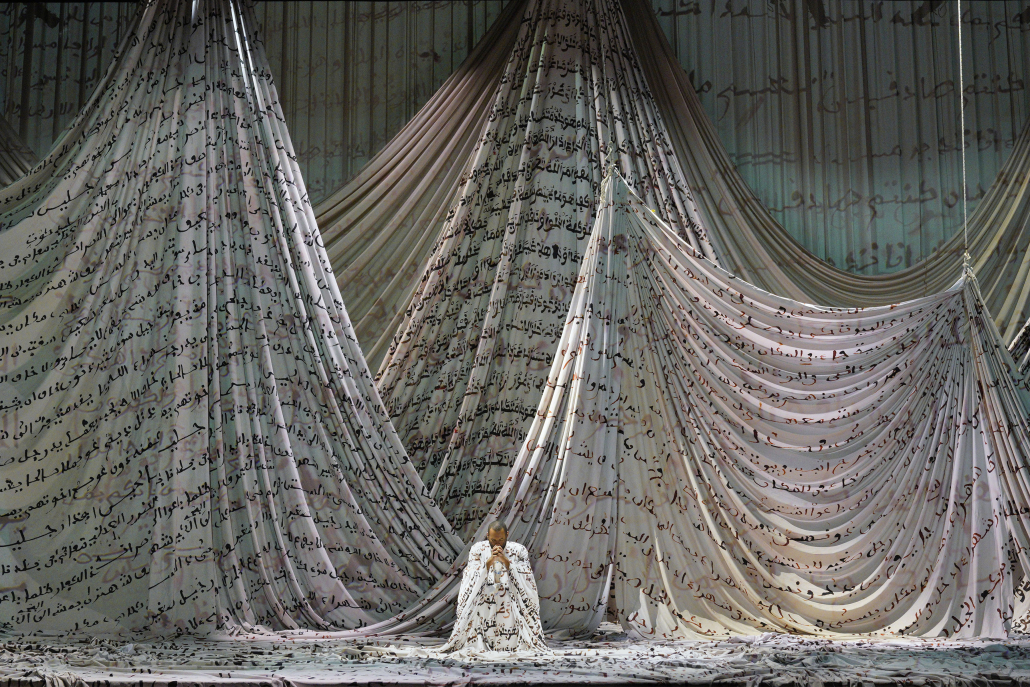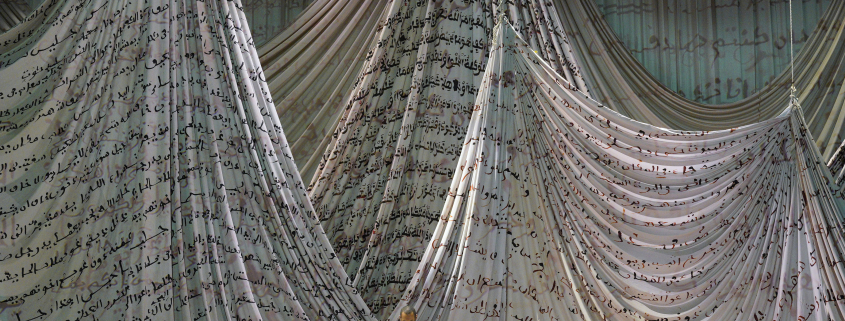‘Omar’ shines in hands of stellar cast

In 1831, Omar ibn Said completed his autobiography, chronicling the heart-wrenching details of his life, from his beginnings in West Africa to his enslavement in the United States. It is the only known surviving Muslim American slave narrative.
Nearly 200 years later, Rhiannon Giddens and Michael Abels have collaborated to create an operatic refashioning of Said’s story. “Omar” is a powerful statement of African American culture and identity, drawing attention to stories that so frequently go untold in this country’s history.
Drawing primarily from “The Life of Omar ibn Said,” Abels and Giddens set the opera in two acts, following the titular character from his beginnings in West Africa to his enslavement in Charleston, South Carolina and Fayetteville, North Carolina. Underpinning the entirety of the harrowing story is a theme of faith, whether it be Muslim, Christian or familial.
In composing “Omar,” Giddens and Abels took a kaleidoscopic approach to style, incorporating as many Black-influenced genres as the opera allowed. Drawing from jazz, soul, hip-hop and much more, the work truly reflects the music of Black America, both past and present. Giddens’ syncretic, genre-bending approach to music is featured heavily, though interestingly, a hallmark of her music — the banjo — is absent. Instead, Abels’ orchestration weaves all of the disparate musical threads through the traditional orchestral palette, giving a sense of cohesion to the otherwise contrasting elements.
As the first act begins, Omar is established as a man of scholarship and faith in the region of Futa Toro in West Africa. Surrounded by an idyllic village and a caring family, his life seems complete and his faith secure. However, the peace of Omar’s life is violently disrupted when raiders arrive, murdering his mother, Fatima, and taking him captive. After enduring a horrific trip across the Middle Passage, Omar faces enslavement in the U.S., resulting in crises of culture, identity and faith.
The titular character is portrayed by tenor Jamez McCorkle, who brings enormous gravity to the role. McCorkle has a commanding stage presence, yet consistently represents Omar’s spiritualism in a manner which centers the entire work. His vocal performance is titanic, lending profundity to even the most skeletal material. Even when in prayer or meditation, McCorkle’s acting demands attention, enrapturing the audience in Omar’s story.
When Omar arrives in the U.S, he meets Julie (Jacqueline Echols) at a slave auction in Charleston. Julie advises Omar to run away to Fayetteville, where they will eventually meet again in the second act. An invented character, Julie’s exact relationship to Omar remains ambiguous in the opera — but her influence catalyzes Omar’s reclaiming of his identity. Echols’ performance is radiant, beautifully filling the tuneful melodies of Giddens and Abels. Her rendition of “Julie’s Aria” in Act Two is one of the most spectacular moments in the entire work.
Though Fatima dies early in the story, she remains with Omar for the entirety of the work, imparting motherly wisdom onto her son. Amanda Lynn Bottoms wonderfully embodies the matriarchal figure with her beautiful singing. Fatima’s reappearance throughout the opera is a reminder of Omar’s cultural heritage and identity, and Bottoms creates an aura of spiritual contemplation with each line.
Daniel Okulitch’s contributions also go far in deepening the opera’s impact. Portraying both of Omar’s enslavers, the cruel Johnson and the (comparatively) more benevolent Owen, Okulitch stirringly recalls the evils of slavery and its effects on African Americans, both then and now. Though Okulitch differentiates the two enslavers in his acting, the unique casting choice of two enslavers to one singer reinforces the universally corrupt nature of slavery.
Outside of the major characters, we often hear from members of the chorus who give individual accounts of slavery which run parallel to Omar’s story. These roles are all stunningly performed, with the cast truly taking ownership of every character. Each performer involved in the production truly breathes their own life into the opera, supplying the music with inordinate power.
Not only do the performers demonstrate enormous devotion to this production, but also the creative team. The staging, designed by Christopher Myers and Amy Rubin, never fails to impress, whether it be the incredible projections employed throughout the work or the use of suspended objects to create scenes like Omar’s Fayetteville jail cell. The costuming by April M. Hickman and Micheline Russell-Brown is gorgeous, subtly complementing the themes of the work.
When Omar comes to the decision to write his story at the end of the opera, every element of the production comes together. The opera takes on a uniquely communal feeling, as the ouroboros-inspired ending again returns to faith. In this LA Opera production, the Giddens/Abels collaboration comes to life, leaving the audience with a message about American culture that is unique in its poignancy and modern relevance.
Remaining performances for “Omar” are on Nov. 5, 9 and 13. Student Rush tickets are available for $25 on the day of each performance.

